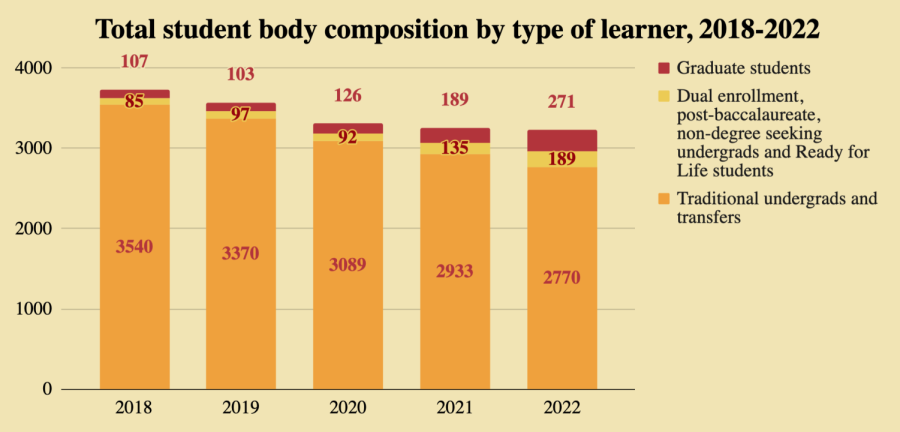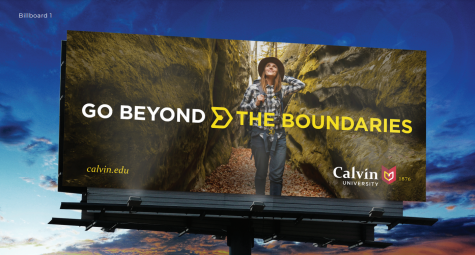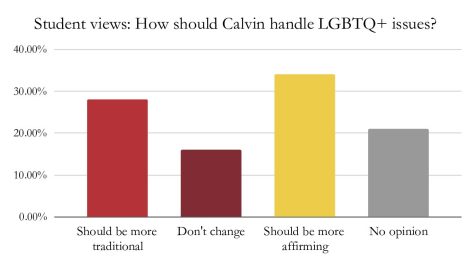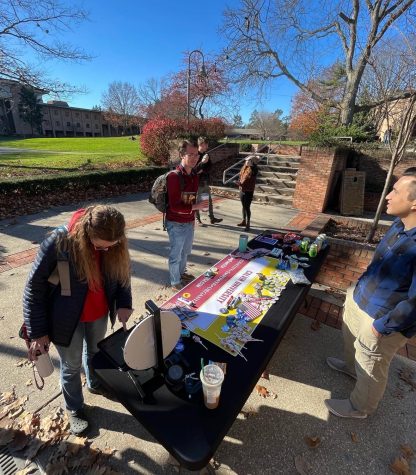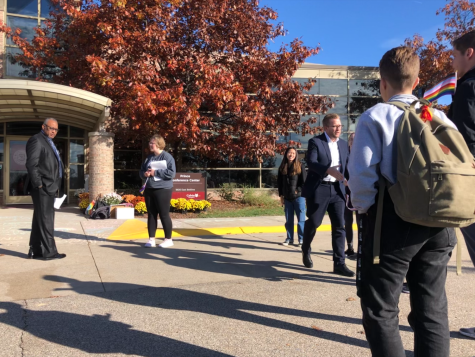The changing composition of Calvin’s student body
Census data shows undergraduate and Reformed populations still shrinking, graduate programs growing
The data reflect the university’s ongoing efforts to rely on a wider range of student types; more than 14% of the current total student body is made up of nontraditional students.
This year’s first-year undergraduate class is about 14% smaller than last year’s, according to new data released by the university last week, but enrollment in graduate programs grew by about 43%. There are 630 students in the incoming FTIAC (first time in any college) class, making it Calvin’s smallest FTIAC class since census day reports began being compiled online in 2006.
The data reflect the university’s ongoing efforts to rely on a wider range of student types; more than 14% of the current total student body is made up of nontraditional students, including graduate, dual enrollment, post-baccalaureate, Ready for Life and non-degree seeking students.
“Calvin continues to expand in our reach to new and different learners, while also remaining committed to our current learners,” Vice President for Enrollment Strategy Lauren Jensen told Chimes.
Growth in international and BIPOC populations and in students from outside of Michigan are also “bright spots for our long-term planning,” Jensen said.
The incoming class shows the fruits of enrollment strategy aimed at expanding Calvin’s reach internationally and domestically. With 169 international students and US citizens living abroad and 177 domestic students — including readmitted students and graduate students who will start in Fall Session 2 — who identified as Black, Asian, American or Alaska Native, Hawaiian or Pacific Islander, Hispanic or multi-racial, the class is one of Calvin’s most diverse ever.
The enrollment funnel
Calvin’s enrollment strategy has successfully increased the total number of applications over the past few years, according to Jensen. Turning those applications into deposits from committed students has proved more challenging. The new markets that admissions is reaching into tend to have lower yield rates — that is, their applications are less likely to be followed by deposits — than the markets the university has depended on in the past, such as Michigan students and children of alumni.
About 23% of the incoming class this year is children of alumni, down from about 30% last year. According to Jensen children of alumni have traditionally been a high-yield population — applicants who are likely to ultimately commit to Calvin.
“When you talk about ‘We have more applications, but lower yield,’ part of that is tied to a population that has historically yielded really well and didn’t yield as well or didn’t yield the same way for us this year,” Jensen said. “At the top of the recruitment funnel we’ve been trying to reach both our current populations and new audiences. Some of that will include more diverse populations who won’t convert, or yield, at the same rates.”
Last year’s recruitment cycle set a record for applications, with about 4,000 in total, according to Jensen. Those 4,000 applications ultimately turned into 736 FTIAC students and 983 total new students — the first growth in enrollment in eight years. But this year reaching more than 4,000 applicants failed to result in similarly high final enrollment numbers.
“Really what happened this year is we didn’t have the same percent yield of our students,” Jensen said. “A lot of students who are learning about Calvin and applying are less familiar, so it takes more and more continued effort and awareness to continue to get them to choose Calvin as their final destination.”
Ongoing and new initiatives aim to increase yield rates in the future.
During COVID, Calvin piloted test-optional applications, meaning students could apply without taking a standardized test like the SAT or ACT. That is now established practice, according to Jensen.
The university has also launched a visit grant program and is investing in creating individualized visit experiences.
Diversity
Calvin News reported on Aug. 23 that “the 173 students coming from outside the United States represent more than 17% of the class, which is a record for the university.” This percentage includes both students with international citizenship and US citizens living abroad. While the number of students in this category decreased slightly before numbers were finalized, it remains an institutional high. The total incoming class includes 169 international students. Of those 169, 138 are FTIAC students.
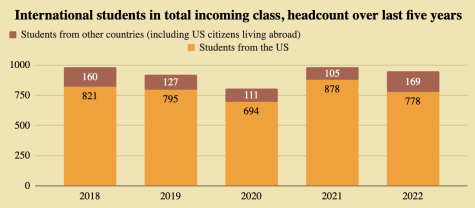
The number of students with international citizenship has been decreasing steadily since 2018, but a significant increase in students who are US citizens living abroad buoyed the university’s international student numbers this year.
The university does not record the ethnicity of international students, but the domestic incoming class, including graduate students who will start in Fall Session 2 and readmitted students, boasts 177 students who identified as Black, Asian, Hispanic, American or Alaska Native, Hawaiian or Pacific Islander or multi-racial. These students make up about 17.5% of the class — edging out 2018’s previous record of 17.3%.
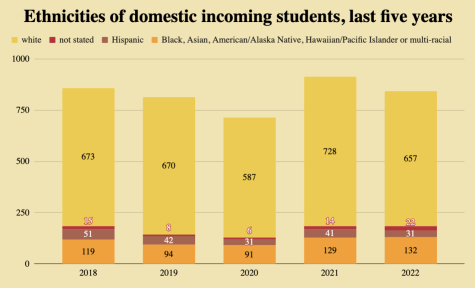
Religion
In this year’s incoming class of 946 students, more than 300 do not have a reported religious affiliation. About 290 belong to a Reformed tradition, including Presbyterianism, 35 are Catholic and 310 belong to other churches.
This year, 552 students across grade levels did not have a religious affiliation reported. CRC, other Reformed and other church categories all shrank this year. CRC students make up 23.7% of the current student body — the lowest percentage of CRC students in the school’s history. The high rate of students without reported religious affiliations is primarily due to unreported data about nontraditional students, Jensen told Chimes.
This story has been updated to clarify religious demographic categories.



